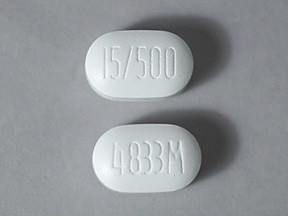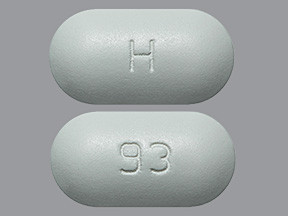PIOGLITAZONE/METFORMIN - ORAL
PHONETIC PRONUNCIATION: (PYE-oh-GLI-ta-zone/met-FOR-min)
COMMON BRAND NAME(S): Actoplus Met
GENERIC NAME(S): pioglitazone HCl/metformin HCl
Uses
USES: This combination medication is used along with a proper diet and exercise program to control high blood sugar in people with type 2 diabetes. Controlling high blood sugar helps prevent kidney damage, blindness, nerve problems, loss of limbs, and sexual function problems. Proper control of diabetes may also lessen your risk of a heart attack or stroke. Pioglitazone belongs to a class of drugs known as thiazolidinediones or "glitazones". Metformin and pioglitazone work by helping to restore your body's proper response to the insulin you naturally produce. Metformin also decreases the amount of sugar that your liver makes and that your stomach/intestines absorb. Talk to your doctor about the risks and benefits of using pioglitazone-containing products.
How to use PIOGLITAZONE/METFORMIN - ORAL
HOW TO USE: Read the Medication Guide provided by your pharmacist before you start taking pioglitazone/metformin and each time you get a refill. If you have any questions, ask your doctor or pharmacist. Take this medication by mouth as directed by your doctor, usually once or twice daily with meals to decrease stomach upset. Drink plenty of fluids while taking this medication unless otherwise directed by your doctor. The dosage is based on your medical condition, response to treatment, and other medications you may be taking. Be sure to tell your doctor and pharmacist about all the products you use (including prescription drugs, nonprescription drugs, and herbal products). To reduce your risk of side effects (such as upset stomach), your doctor may direct you to start this medication at a low dose and gradually increase your dose. Follow your doctor's instructions carefully. Take this medication regularly in order to get the most benefit from it. Remember to use it at the same time(s) each day. If you are already taking another diabetes medication, follow your doctor's directions carefully for stopping/continuing the old drug and starting this medication. Check your blood sugar regularly as directed by your doctor. Keep track of the results, and share them with your doctor. Tell your doctor if your blood sugar measurements are too high or too low. Your dosage/treatment may need to be changed. It may take up to 2 to 3 months before the full benefit of this drug takes effect.
Side Effects
Precautions
Interactions
Overdose
Images

- color
- white
- shape
- oblong
- imprint
- 4833M, 15/500

- color
- white
- shape
- oblong
- imprint
- 4833M, 15/850
Reviews
Faq for PIOGLITAZONE/METFORMIN - ORAL
Pioglitazone/Metformin - Oral is a medication used to treat type 2 diabetes. It helps to control blood sugar levels by increasing the body's sensitivity to insulin and reducing the amount of sugar produced by the liver.
It is usually taken once or twice daily with meals as directed by your doctor. The dosage may vary depending on your medical condition and response to treatment. It is important to follow your doctor's instructions and take the medication regularly for optimal results.
Common side effects include headache, muscle pain, diarrhea, stomach pain, and weight gain. If any of these side effects persist or worsen, you should consult your doctor.
Serious side effects may include severe allergic reactions, symptoms of heart failure such as swelling of the hands/feet, shortness of breath, and unusual tiredness. It is important to seek immediate medical attention if you experience any of these symptoms.
It is generally recommended to avoid alcohol consumption while taking this medication as it may increase the risk of lactic acidosis, a potentially serious condition.
It is not recommended to use this medication during pregnancy. Consult your doctor for safer alternatives. It is also not recommended to use Pioglitazone/Metformin - Oral while breastfeeding as it may pass into breast milk and harm the nursing infant.
Pioglitazone/Metformin - Oral may interact with other medications, including certain blood thinners, diuretics, birth control pills, and certain anti-seizure medications. It is important to inform your doctor about all the medications you are taking to avoid any potential interactions.
The medication may start working within a few days to a few weeks, depending on the individual. It is important to regularly monitor your blood sugar levels and follow up with your doctor to determine the effectiveness of the medication.
The use of Pioglitazone/Metformin - Oral in children is generally not recommended. It is important to consult a pediatric specialist for appropriate treatment options for children with diabetes.
Warning
WARNING: Pioglitazone may rarely cause or worsen a certain heart problem (heart failure). Tell your doctor right away if you notice any symptoms of heart failure, including: shortness of breath, swelling ankles/feet, unusual tiredness, unusual/sudden weight gain. This medication is not recommended for people with certain types of heart failure. Before using this medication, tell your doctor if you have heart failure. Rarely, too much metformin can build up in the body and cause a serious (sometimes fatal) condition called lactic acidosis. Lactic acidosis is more likely if you are an older adult, if you have kidney or liver disease, dehydration, heart failure, heavy alcohol use, if you have surgery, if you have X-ray or scanning procedures that use iodinated contrast, or if you are using certain drugs. For some conditions, your doctor may tell you to stop taking this medication for a short time. Ask your doctor or pharmacist for more details. Stop taking this medication and get medical help right away if you have any symptoms of lactic acidosis, such as unusual tiredness, dizziness, severe drowsiness, chills, blue/cold skin, muscle pain, fast/difficult breathing, slow/irregular heartbeat, or stomach pain with nausea/vomiting/diarrhea.
Disclaimer
IMPORTANT: HOW TO USE THIS INFORMATION: This is a summary and does NOT have all possible information about this product. This information does not assure that this product is safe, effective, or appropriate for you. This information is not individual medical advice and does not substitute for the advice of your health care professional. Always ask your health care professional for complete information about this product and your specific health needs.


No Reviews Yet